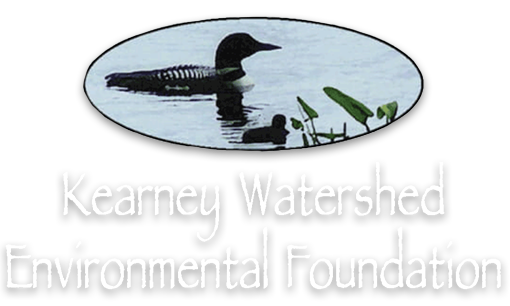October 2023 Newsletter
https://bit.ly/KWEFOct2023Newsletter
Included in this issue:
Why Do Lakes Turn Over Each Fall & Spring?
Wild Bee Populations are Declining - Save the Bee's !
Why Do Lakes Turn Over Each Fall & Spring?
Each spring and fall, our lakes experience seasonal changes that are important to the health of their aquatic life.
This seasonal change, called turnover, causes the water at the top and bottom of lakes to mix. Water has different densities at different temperatures. In the summer and winter, the water forms into layers, with warmer water, which is less dense, floating atop a layer of cooler, more dense water in the summer. The opposite happens in the winter. The oxygen in the lake stays with the warm water, at the top of the lake in the summer and at the bottom in the winter.
As seasons change, the temperature of the water at the lake's surface begins to change. In the spring, changes in sunlight intensity warms the top layer of water. Eventually, the water temperature at the top and bottom of the lake equalizes. When this happens, the lake is said to turn over because oxygen from the top and bottom of the lake mix, and nutrients trapped at the lake bottom are released, freely moving about the lake.
A similar process happens in the fall in deeper lakes. As the lakes cool, the water temperature at the lake's surface and bottom equalizes and the lakes turn over the oxygen and nutrients in the water, allowing everything to become mixed before again settling into layers.
Lake turnover is vital to lake health because of how it affects oxygen levels. There is more oxygen in the water in the top layer of a lake because bacteria living at the bottom of lake consume the oxygen. If turnover didn't happen, suitable habitat at the bottom of these lakes would decline over time as the oxygen was consumed. The yearly cycle of turnover keeps lake habitats healthy for fish and other aquatic species.
Casual observers might not notice lakes turning over in the spring and fall, but there are sometimes noticeable signs. Lakes can sometimes have an unpleasant smell during turnover, as the nutrients trapped at the bottom of the lake begin to circulate. The mucky decomposing organic matter at the bottom of the lake can also be churned up, making the water look a little dirty.
Source: www.reconnectwithnature.org
Wild Bee Populations are Declining - Save the Bee's !
By Stan Walker
Recently, when passing by a section of my wife's flower garden, I stopped to marvel at the number of different pollinators working the late season blooms. A recent article on the consequences of poorly defining the problem impacting bees and its possible solutions came to mind.
Yes, the world’s wild pollinator populations are in decline, but unfortunately the commercial honey bee segment got most of the attention. For over a decade, commercial bee keepers have been experiencing loss of entire hives of bees! – They just disappeared – and the phenomenon is called Colony Collapse Disorder. Research is ongoing and the causes are still not well understood. Pesticides, parasites, climate change and the stresses on the thousands of hives of large beekeeping operations, especially when they are trucked around the country to pollinate crops, are all suspects. However, while it is expensive, commercial beekeepers are quite adept at replacing colonies that die.
Unfortunately, the reaction to the “Save the Bees” campaign by the well-meaning public and corporations that wanted to be seen as being “Green” was to create more honey bee hives. Just in the last decade the number of hives has increased by 26%. So now there is a genuine ecological challenge – these extra honey bees now push out the other wild pollinators in an area which harms biodiversity, and the plants that require different types of pollinators. The wild pollinators also are killed by pesticides, disease and the changing climate.
What can we do? We can plant gardens that have a variety of plants and flowers that bloom from early spring to late fall. Gardeners should do their best to limit the causes of climate change and stop using pesticides and herbicides on residential properties for cosmetic reasons. Encourage your neighbours to do the same, so that you can start to create an “island” or safe zone for birds and beneficial insects. If you do have an insect infestation in your garden, look for natural solutions. It may take a couple of years but you will notice that toads, frogs and beneficial insects will return and together with the bird population, they will help keep your garden in balance. They also work for free! Many of the wild pollinators overwinter in nests in cavities in trees or beneath the bark on trees, or in the ground. If your area is more urban and doesn't have that type of environment, you can purchase or make solitary bee nests to encourage them to remain in the area – examples are pictured above. There are lots of fascinating and informative sites online to learn more; www.buzzaboutbees.net is a great place to start.
Resolve now to learn and do more to help these special creatures survive and flourish.


